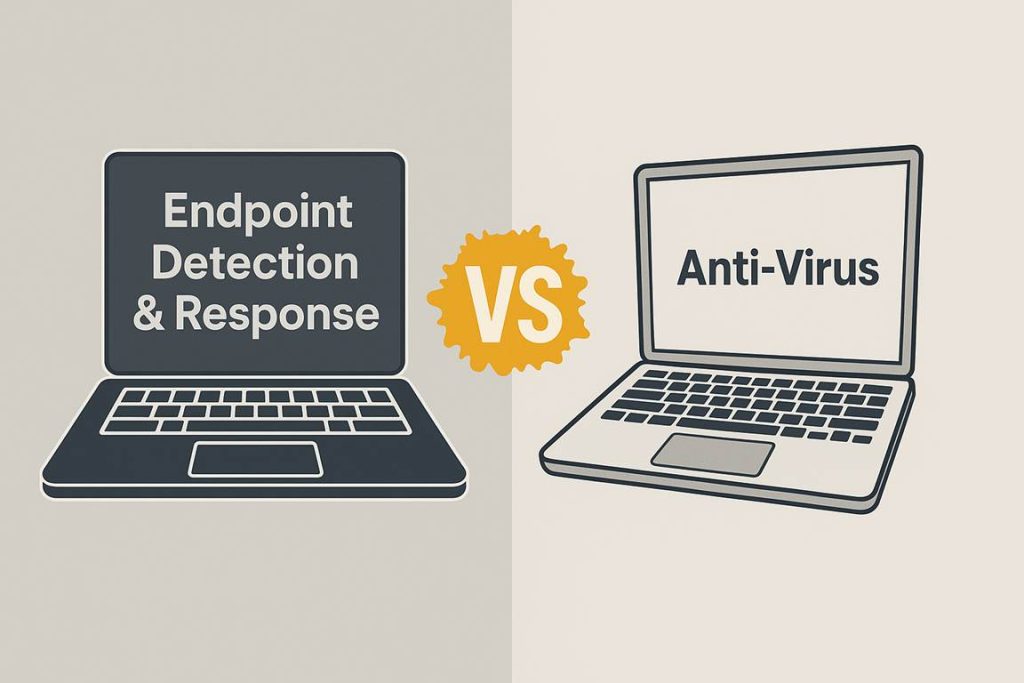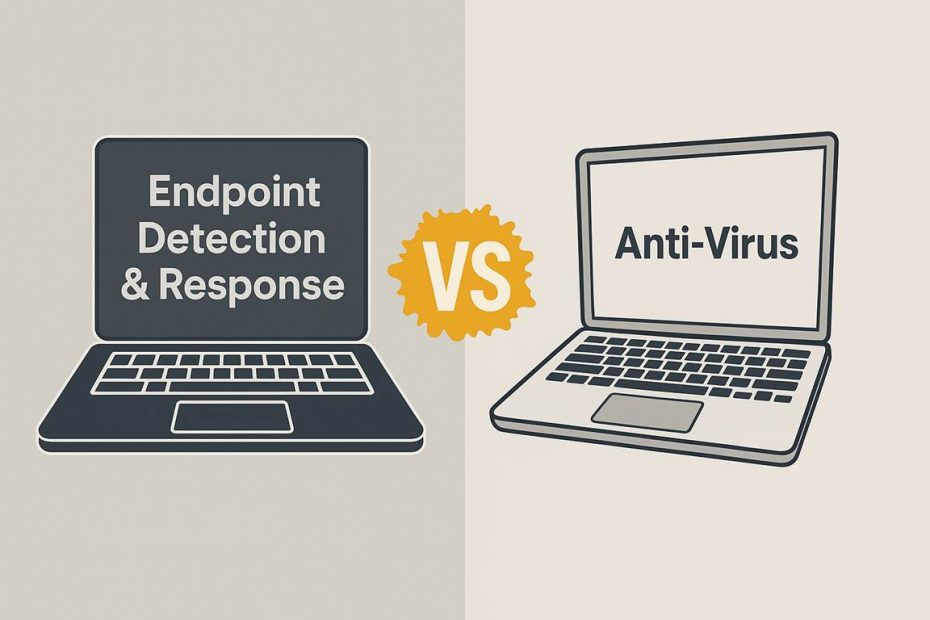For decades, antivirus software stood as the gatekeeper of personal and organizational cybersecurity-scanning files, flagging threats, and quarantining malware. But in today’s world of zero-day exploits, ransomware-as-a-service, and polymorphic attacks, experts are increasingly questioning: Is traditional antivirus enough?
The answer from cybersecurity professionals is a resounding “No.” Enter Endpoint Detection and Response-EDR-systems, the new frontier in endpoint security, offering real-time monitoring and intelligent threat response well beyond the capabilities of traditional antivirus solutions.

Outdated but Still Relevant?
Antivirus software, while still essential as a first layer of defense, operates largely on predefined signatures. In simple terms, it knows what to block because it’s seen it before. The challenge? Modern cybercriminals are evolving faster than these signature databases can keep up.
“In the early 2000s, antivirus could catch 80-90% of threats,” said a senior cybersecurity analyst from Hyderabad-based firm ParadigmIT. “Today, with constantly morphing malware and fileless attacks, signature-based tools are just not enough.”
What Makes EDR Different?
EDR solutions take a more dynamic approach. Rather than just scanning for known viruses, they monitor the behavior of endpoints-laptops, servers, desktops-in real time. Suspicious actions, like a program suddenly encrypting large volumes of data or a script attempting to disable security protocols, trigger alerts or automatic responses.
What sets EDR apart is not only detection but also the ability to respond. A modern EDR tool can isolate an infected device, roll back changes, and provide forensic reports-all while the attack is unfolding.
The IronKlad Edge
One such solution making waves is IronKlad, developed by ParadigmIT Cybersecurity. While traditional antivirus might catch a trojan once it starts misbehaving, IronKlad’s EDR detects deviations in behavior before damage is done. Features like Zero Trust Architecture, application whitelisting, and offline protection ensure security even in the absence of internet connectivity.
The system also supports centralized management-essential for IT teams handling hundreds or thousands of devices-and lightweight agents that don’t slow down systems, a frequent complaint with heavy-duty antivirus tools.
Why This Shift Matters Now
The digital attack surface is larger than ever. With remote work, bring-your-own-device (BYOD) policies, and cloud integration, endpoints are becoming the most vulnerable spots in a network. According to a 2024 report by Cybersecurity Ventures, endpoint attacks grew by over 200% in the last three years.
EDR adoption is no longer a ‘nice-to-have’ but a critical necessity for modern organizations. While antivirus software continues to serve a role in basic protection, EDR is rapidly becoming the industry standard for proactive defense.
Final Word
In the evolving battle between defenders and digital threats, static shields are being replaced by intelligent, responsive armor. As organizations gear up for the next wave of cyberattacks, the message is clear: traditional antivirus might help, but EDR is what might save you.
Contact us at: support.cs@paradigmit.com
Website: www.paradigmitcyber.com

